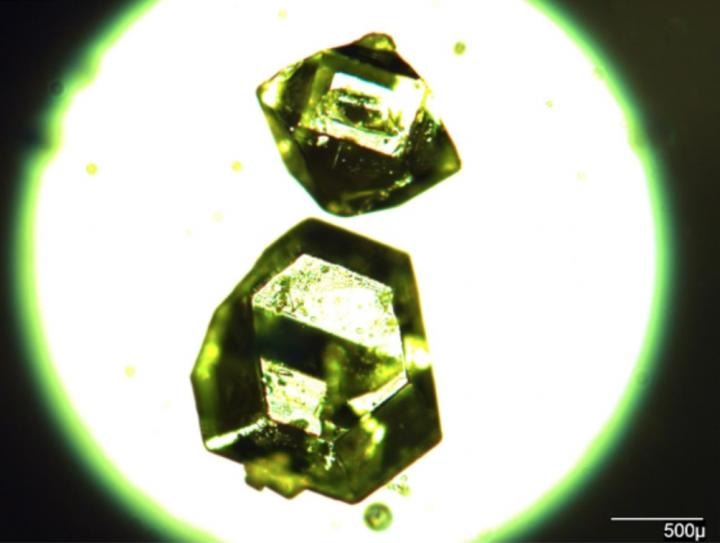Aug 8 2016
 Individual crystals of synthetic zhemchuzhnikovite, prepared by Igor Huskiæ, McGill University (Credit: Igor Huskiæ, Frišèiæ Research Group, McGill University)
Individual crystals of synthetic zhemchuzhnikovite, prepared by Igor Huskiæ, McGill University (Credit: Igor Huskiæ, Frišèiæ Research Group, McGill University)
Metal-organic frameworks (MOFs) are a special group of porous solids, and today are regarded as one of the hottest new materials.
These materials are man-made and were discovered in the 1990s. Since then, scientists across the globe have been exploring ways to employ these materials as molecular sponges for various applications, including photovoltaics, carbon sequestration, or hydrogen storage.
A research team from Russia and Canada recently discovered that MOFs also occur in nature, although in the form of rare minerals which until now could only be found in Siberian coal mines.
These Siberian minerals were observed to have the same structure as some of the artificial MOFs. The results of the study have been reported in the journal, Science Advances.
[The finding] completely changes the normal view of these highly popular materials as solely artificial, 'designer' solids. This raises the possibility that there might be other, more abundant, MOF minerals out there.
Tomislav Friščić, Associate Professor, McGill University
The origins of this discovery were started six years ago, when Friščić read about certain minerals, zhemchuzhnikovite and stepanovite, in a Canadian mineralogy journal. Although these minerals existed in Russia between the 1940s and 1960s, their crystal structure was not fully known.
However the Russian mineralogists who unearthed these minerals studied their chemical composition and structural parameters using X-ray powder diffraction. To Friščić, those basic parameters implied that the minerals may be structurally analogous to a type of artificial MOF. This triggered his interest and subsequently started looking for rare mineral samples, working with experts, vendors, and museums in Russia and elsewhere.
When a potential lead with a mining museum based in Saint Petersburg failed to materialize, Igor Huskić, a graduate student in the Friščić research group at McGill, focused his attention to producing analogs of the minerals in the laboratory and eventually succeeded.
However, the team's work was declined by a leading journal last year, partly because the minerals’ original description appeared in an ambiguous Russian mineralogical journal.
The McGill researchers finally made a breakthrough with the aid of a crystallographer colleague in Venezuela, where they worked with two leading Russian mineralogists, Prof. Igor Pekov of Lomonosov Moscow State University and Sergey Krivovichev, a professor at Saint Petersburg State University.
Both Pekov and Krivovichev acquired the original samples of both these rare minerals that were discovered many years ago in a coal mine deep under the Siberian permafrost. They also established the minerals’ crystal structures. These findings validated the original results obtained from McGill’s laboratory synthesis.
Zhemchuzhnikovite and Stepanovite minerals have the complicated, honeycomb-like structure of MOFs, defined by huge voids at the molecular level. However, these minerals do not represent the hottest varieties of MOFs - those that are under development to capture carbon dioxide waste or use in hydrogen-fueled cars.
As a result, Friščić and others are widening the scale of their study to establish if other, more abundantly available minerals possess porous structures that could make them more appropriate for drug delivery, hydrogen storage, etc.
According to Friščić, the finding of MOF structures in the two rare minerals is "paradigm-changing". He also noted that if researchers had been able to establish such structures in the 1960s, then the advancement of MOF materials "might have been accelerated by 30 years."